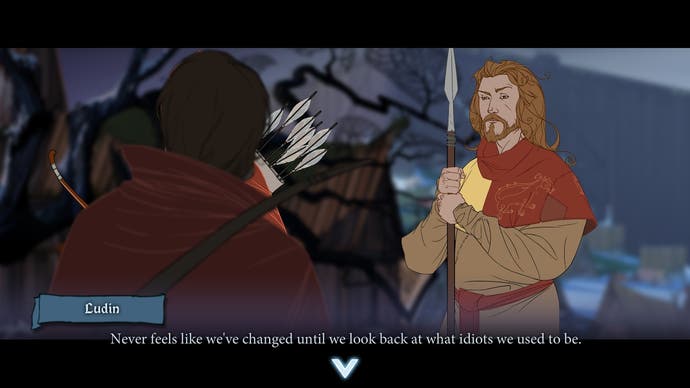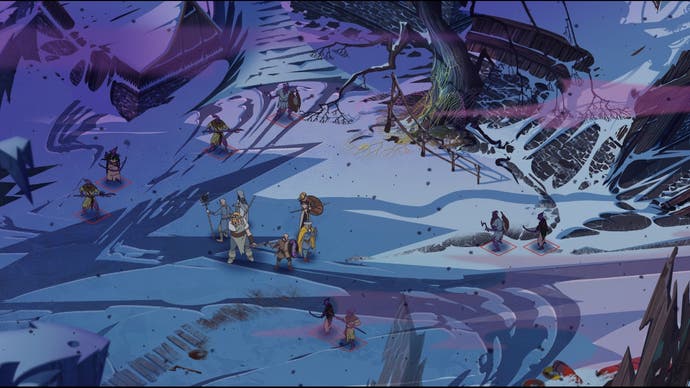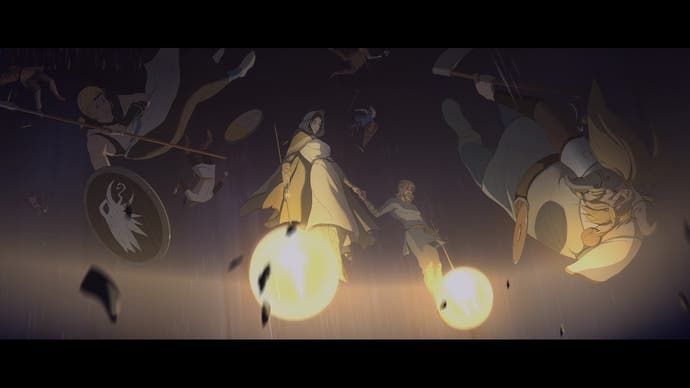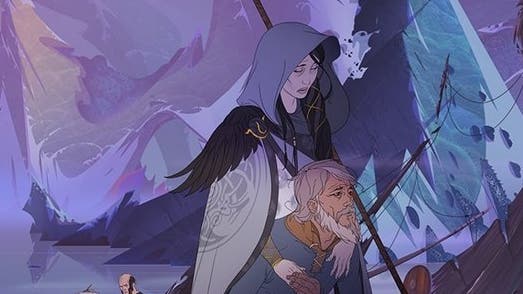The Banner Saga 3 review - mournful tactical excellence
Clash of clans.
While the world outside beckons with summer sunshine, I have decided to return to the cold, faraway lands of Stoic Studio's The Banner Saga instead.
Since the last part of this series, which now finds its conclusion with The Banner Saga 3, an unexplained darkness has warped everything it touches. Having accompanied many different characters in their desperate search for safety from the race known as Dredge, it now increasingly looks like nothing short of Ragnarok, the apocalypse, is at hand.
The Banner Saga has always been my go-to out of the brand of games that make certain defeat an important part of their appeal. In many of them, such as Into The Breach or Telltale's The Walking Dead, you can't avoid death, and neither should you try to. Among all the games that want me to win, to emerge victorious in some capacity or other, The Banner Saga has, from its very beginning, merely asked that I hold on, somehow.

This is exemplified in its three types of gameplay: at the end of The Banner Saga 2, the giant-like varl Iver has set out into the darkness threatening the entire world. While you control him, you're once again travelling to reach a certain destination. The urgency of your task forces you to make the decision of when to rest and when to push on.
Depending on who you've saved all the way back in the first instalment of The Banner Saga, either archer Rook or his daughter Alette has led their clan to Arberrang, the last city that still stands, only to find it besieged both from the in- and outside. In their position, you have to make certain logistic decisions, such as how to defend the city walls or allocate supplies, and mediate between fearful parties of different races to stave off certain chaos for a little while longer.
The Banner Saga has managed to make your choices up to this point matter, for the most part. If you import your save game from The Banner Saga 2, it will remember how much renown you have earned and are thus able to spend on either levelling up your characters or buying supplies, and you get to reunite with all the characters you managed to save. Depending on how you fared, your roster is now enormous. If you start afresh, The Banner Saga 3 will assume you got everyone out alive. Both cases will likely leave you with more characters than you'll know what to do with.

Narratively, having many people with you isn't a bad thing, because you'll finally be able to learn more about those you've been travelling with for a long time but never got to know. As before, brief moments of respite regularly give you the chance to talk. The Banner Saga is most enjoyable if your playthrough of the previous instalment isn't that long ago. While you can watch a summary of past events, there are a lot of small references that I appreciated more because I could still place names and faces. In terms of the tactical battles however, having this many characters leads to having a few duplicates in your roster, characters with different faces, identical abilities, and not much else.
Stoic tries to counterbalance this by giving you the option of continuing to fight several waves of foes. If you win one round, you can take a moment to exchange the fallen or severely wounded members of your fighting party and keep going to earn more rewards. If you really enjoy the battles, this is the option for you. I found it made the already frequent altercations drag on unbearably at times.
The levelling system now allows you to invest in higher likelihoods to dodge blows or do critical damage once you've maxed out all your stats. This makes The Banner Saga 3 almost too easy on occasion. Battles in the previous two games sometimes had me gnashing my teeth, this time around, I wasn't in danger of losing once. Enemies are now twisted versions of classes you already know, slightly stronger, yet easy to overcome once you know how. Once I found my favourite combination of fighters, I only changed them if the layout of the map called for it.

With Iver's travelling band of mercenaries you'll encounter a few new enemies, most notably something that looks like a cross between Cthulhu and a tick. They even make the acquaintance of a few new characters, among them someone who plays a pivotal part at the very end of the game.
The way The Banner Saga 3 presents what's essentially a lost battle from the start is exceptional. The writing is as strong as ever, realistic enough that sometimes I just had to stop playing to open the blinds and let the sun in for a moment to escape the bleakness of it all. Much of the soundtrack by Austin Wintory ends up being even darker and less melodic than before, with sharp, dissonant wind sections punctuating the silence like sudden burst of panic.
Everything, from the way your timer is now counting down the days to the knowledge that you'll make a bad decision somewhere and it will cost you somehow helps you understand the true meaning of war - something that's easy to forget when elsewhere, you're so intent on winning it.
The Banner Saga 3 ends up uncomfortably timely, as it confronts players with the fear of the other at multiple junctions, and fits in several pertinent questions without ever saddling you with answering them definitively. In this game, I met people for whom power was more important than helping to end suffering, and I had to deal with the certainty that those I left behind would likely die, but could also turn out to be a burden if I wasn't careful.
It reminded me that squabbles for power and the fear of death are real, that all most people can do in the face of this is to take it one day at a time. That's why in many respects, the ending of The Banner Saga 3 isn't an ending at all, and I wouldn't blame anyone for being slightly dissatisfied with it.
After everything is said and done however, you have the memory of meeting new friends and fighting some stressful battles, and I guess that's really just what life is about.


